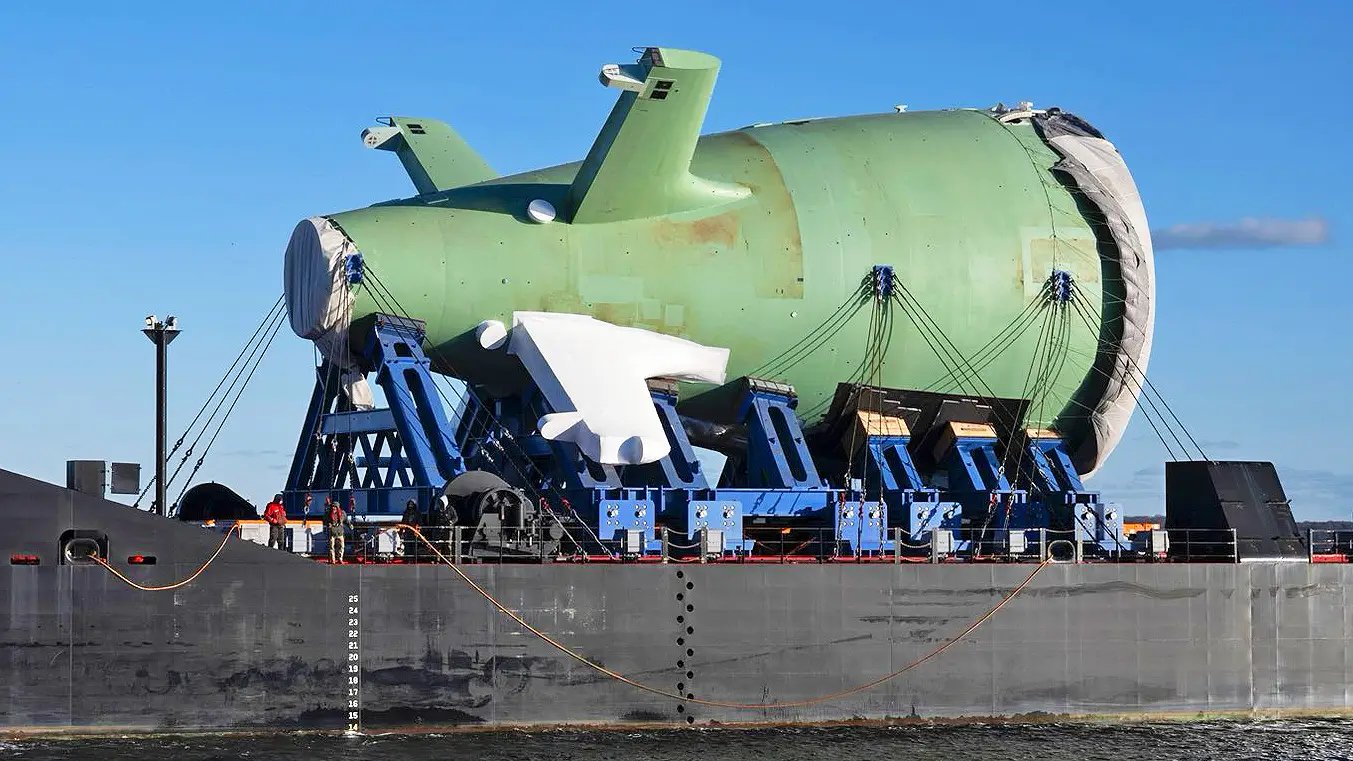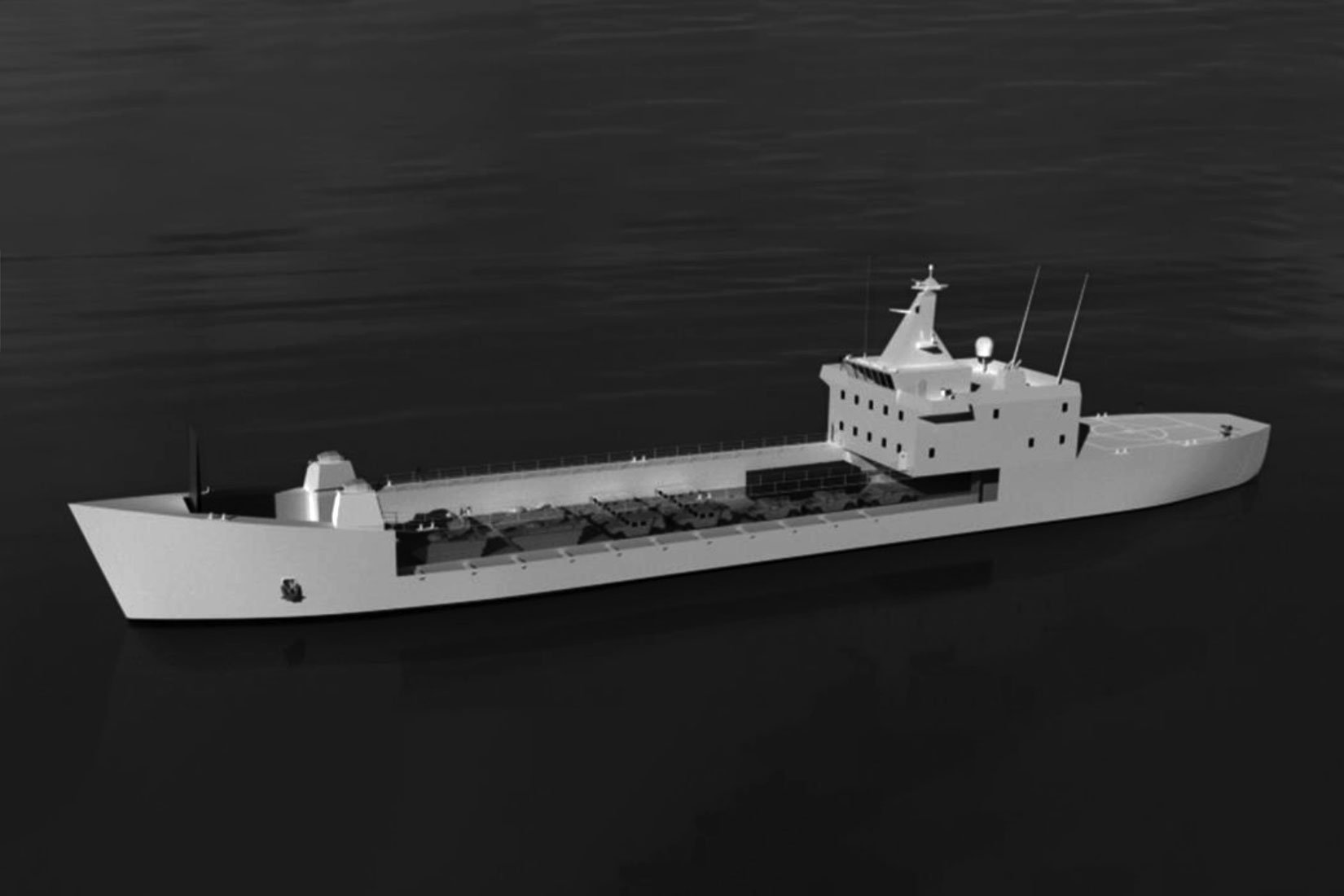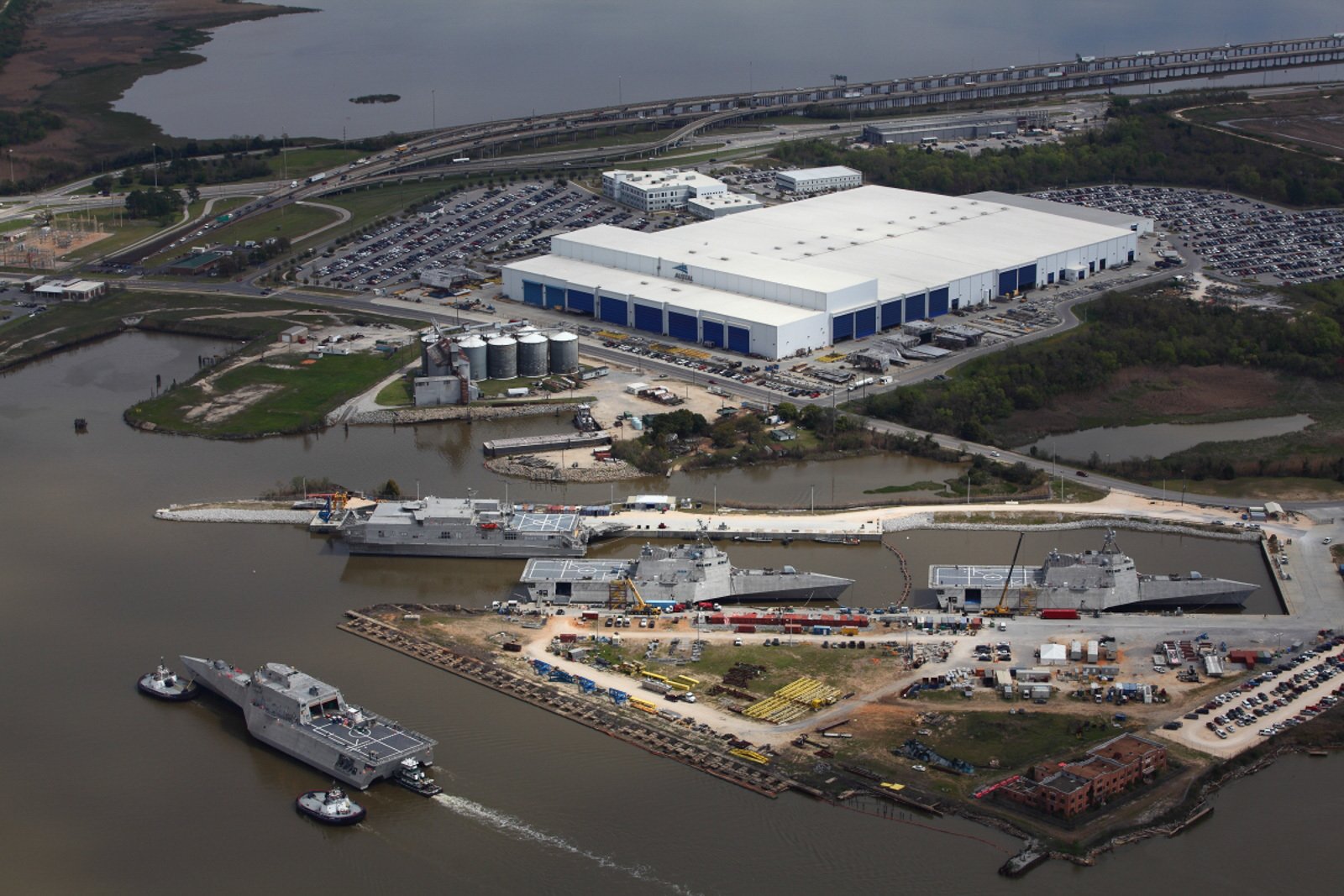
The Navy’s plan to buy just one Littoral Combat Ship in Fiscal Year 2019 has the two LCS shipbuilders uneasy, just a year before the program is set to transition to a guided-missile frigate and downselect to a single contractor.
Last year Navy leadership was vocal about the need to maintain a three-a-year minimum LCS acquisition rate until the next-generation frigate transition to ensure both builders remained viable competitors for the upcoming frigate work. But a year later, new leadership is confident in the single-ship purchase – which would leave one builder without a 2019 ship at all.
“There will be 21 LCSs under construction or planned for award across two shipbuilders,” Navy spokesman Capt. Danny Hernandez told USNI News. That 21-ship figure includes two LCSs the Navy requested in FY 2018 and the one in 2019, though the FY 2018 purchase has not been finalized yet due to Congress not passing a defense appropriations bill.
“This provides a sufficient workload, allowing both shipbuilders to maintain stability and be competitive for the FFG(X) award in FY 2020. Additionally, the budget requests for ‘18 and ‘19 will meet the LCS component (32) of the Navy’s requirement for 52 Small Surface Combatants (SSC) as outlined in the 2016 Force Structure Assessment,” he added. The Navy previously planned to buy 52 LCSs but then broke up the Small Surface Combatant requirement into 32 LCSs and 20 follow-on frigates.
Ahead of the Navy buying its first frigates in FY 2020, five companies are working with the Navy on maturing their designs – and three of the five have ties to the current LCS production lines. Austal USA is pitching a derivative of its Independence-variant LCS, Lockheed Martin and subcontractor Fincantieri Marine are pitching a derivative of the Freedom-class LCS, and Fincantieri as the prime contractor and Lockheed Martin as the subcontractor are pitching the Italian FREMM design. Disrupting hot production lines, therefore, could put the LCS builders at a disadvantage or risk the Navy starting the frigate program with less-than-optimal efficiency.
Given that having a hot production line is part of Austal’s and Lockheed Martin’s pitch in the frigate contest, they worry that the Navy buying just one ship in 2019 puts that at risk for them just ahead of a frigate downselect.
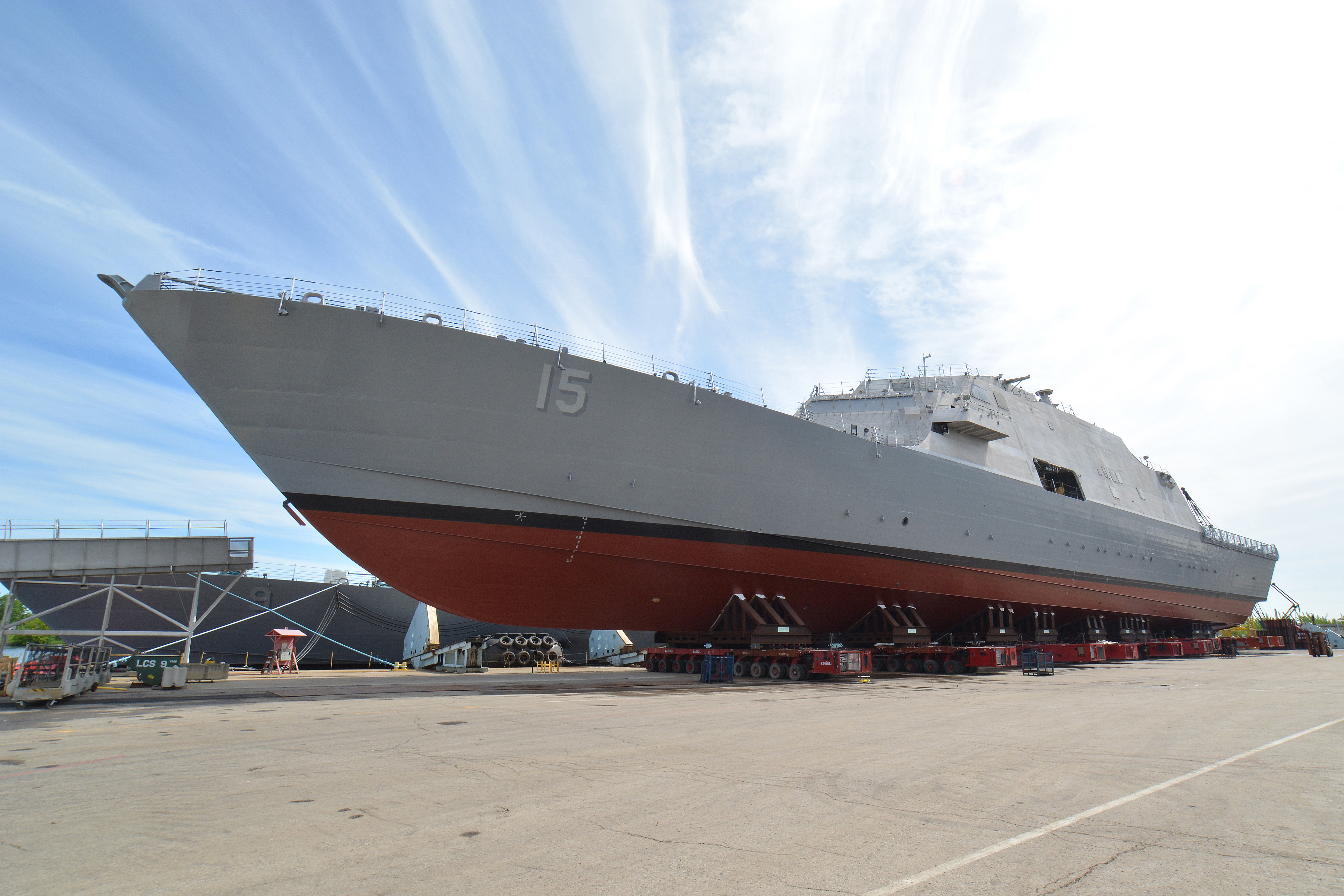
“Funding one LCS in the FY19 budget is not sufficient to support the Shipbuilding Industrial Base. Austal is efficiently delivering on average four ships per year to the Navy (two LCS and two EPF). Any reduction in volume would negatively impact the shipbuilding industrial base, including our suppliers (local and national), as well as the ability to efficiently transition to Frigate,” Austal USA told USNI News this week in a statement.
“Austal stands ready with capacity now to efficiently build the Navy our nation needs while being able to support an aggressive growth plan to a 355 ship fleet.”
“Over the past 10 years, the Freedom-variant industry team invested over $120 million to modernize the shipyard, hire more than 1,000 people and train a new workforce. This private investment optimized the shipyard for serial production at a rate of two Littoral Combat Ships per year. At this rate, our current production backlog is insufficient to maintain the employment and efficiency levels required for our team to remain competitive for Frigate,” Lockheed Martin told USNI News in a statement.
“If additional LCSs are not awarded in 2018 and 2019, the Freedom-variant LCS serial production line will experience a gap in construction, which would negatively impact the trained workforce and reduce the efficiencies that make both Lockheed Martin and Fincantieri’s FFG(X) offerings so compelling to U.S. Navy. Keeping LCS production stable is vital to preserving our shipyard workforce and efficient production at all stages of the construction process.”
Hernandez told USNI News that, though he couldn’t comment on private conversations between the shipbuilders and Assistant Secretary of the Navy for Research, Development and Acquisition James Geurts, “I can tell you Mr. Geurts speaks with industry members on a regular basis and he believes there is sufficient workload to sustain the industrial base. Navy leadership recognizes the critical nature of maintaining the shipbuilding industrial base while transitioning from LCS to the Frigate. The LCSs in our budget plan allows Navy to mature the Frigate design, better understand the cost drivers across the various design options and also preserves viability of the current small surface combatant industrial base in the near term, allowing them to be competitive for the Frigate design in FY-20.”
Navy officials in recent years have stressed the need for continuous, predictable work at shipyards to maintain hot production lines that meet or exceed cost and schedule goals. Whatever the size of the backlog of work, officials have warned, not putting new ships on contract can still disrupt the supply chain and production line and create cost and schedule consequences.
Program Executive Officer for LCS Rear Adm. John Neagley told USNI News last year that three LCSs a year – one and a half per year per shipyard – was the minimum buying rate needed to keep the production lines healthy ahead of the frigate transition.
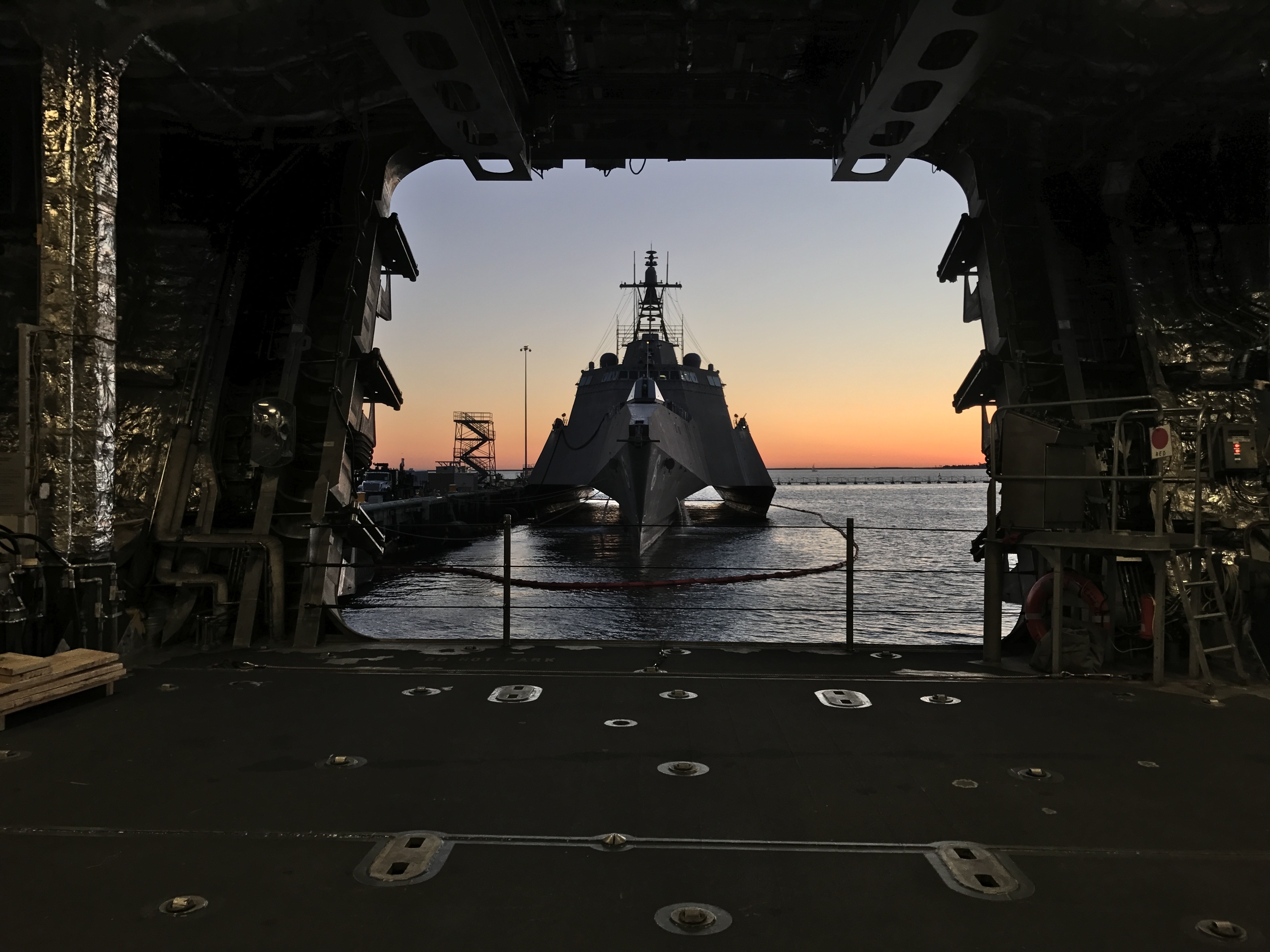
“It’s like building a house. You have guys who do the foundation, and you have guys that’ll hang the drywall. So if you don’t have ships coming in for the guys who do the foundation, then those guys have to go find other work. So it’s not only the timing and the number of the ships but it’s the sequencing of work that provides the efficiency. The shipyards invested to do two ships a year on six-month centers, and so about one-and-a-half is an efficient build for me. Below that, we can certainly build ships, but I would expect to see impact to schedule and cost,” Neagley said.
Last year the Pentagon requested just one LCS in its 2018 request but the next day added in a second hull. Lawmakers pushed back – especially the Wisconsin and Alabama delegations – and the FY 2018 National Defense Authorization Act ultimately included three LCSs. It is unclear yet, though, if the Navy will be able to buy all three, since an FY 2018 appropriations bill is still pending.
Sen. Tammy Baldwin (D-Wisc.) wrote to President Donald Trump last spring, warning that “including fewer than three LCS in your FY18 budget request would result in layoffs of highly-skilled manufacturing workers in the Midwest beginning next summer. … Only one LCS in FY18 could result in up to 800 layoffs at the shipyard, or 36 percent of the workforce, and a total of 1,850 jobs lost across the state.”
“Layoffs of this magnitude would have dire impacts on the ability of the Marinette shipyard and supply chain to compete for the Navy’s Frigate, which will soon follow the LCS,” Baldwin continued.
“That would result in reduced competition in the Frigate acquisition, driving up costs to the taxpayer, and harm to our national security by undercutting the strength of our domestic industrial base.”




